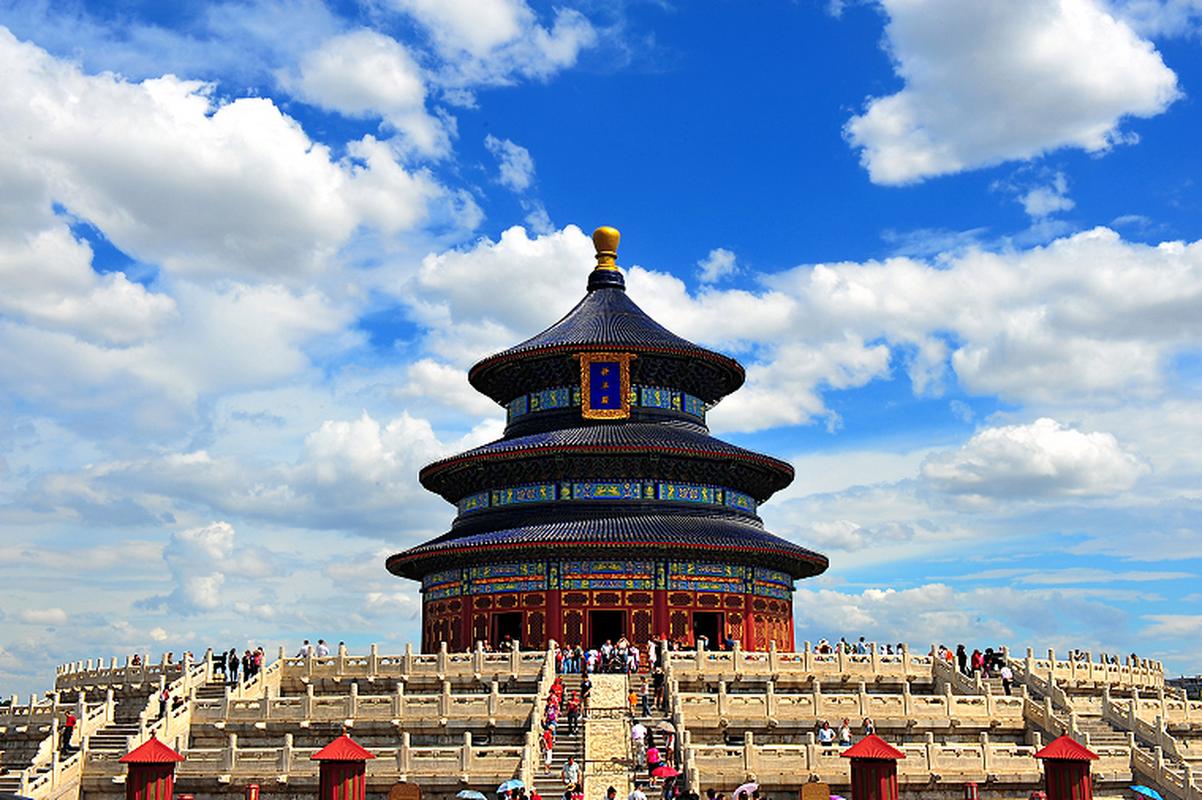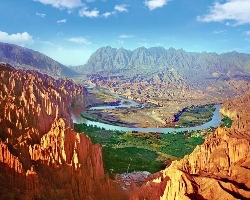- Home
- Tour Packages
- Destination
- About Us
- Contact
- Reviews
- Travel Guide
-
-
- Must-Go Destination Travel Guides
- Yunnan
- Guizhou
- Pingyao
- Hangzhou
- Guangzhou
- Guilin
- Chongqing
- Datong
- Huangshan
- Xiamen
-
-
-
- Customize Your Trip
Email:[email protected]
Email:[email protected]
Just China Tours, Just For You!
Temple of Heaven: Explore Beijing's Sacred Imperial Altar
- Home
- Temple of Heaven: Explore Beijing’s Sacred Imperial Altar
The Temple of Heaven (天坛, Tiāntán) is a magnificent complex of religious buildings and gardens in southeastern Beijing. This UNESCO World Heritage site is considered a masterpiece of Chinese architecture and landscape design, showcasing the profound connection between Earth and Heaven in Chinese cosmology.

Temple of Heaven
When and Who built the Temple of Heaven?
- Original construction:
- Built between 1406 and 1420 during the reign of the Yongle Emperor of the Ming Dynasty.
- The Yongle Emperor, who also built the Forbidden City, ordered its construction.
- It was originally called the Altar of Heaven and Earth when first completed in 1420. - Major renovations and expansions:
- In 1530, during the reign of Emperor Jiajing of the Ming Dynasty, it was extended and renamed the Temple of Heaven. The Circular Mound Altar was added at this time.
- In 1749, during the Qing Dynasty under Emperor Qianlong, it underwent extensive restoration and expansion to reach its present scale and layout. - Key structures added over time:
- The Hall of Prayer for Good Harvests was part of the original 1420 construction.
- The Imperial Vault of Heaven was built in 1530 and rebuilt in 1572.
- The Circular Mound Altar was first built in 1530 and rebuilt in 1749.
So in summary, while initially constructed in the early 15th century by the Yongle Emperor, the Temple of Heaven complex evolved over several centuries through expansions and renovations by subsequent Ming and Qing emperors to become the site we see today.
Tour Information about Temple of Heaven
Where is it?
The Temple of Heaven is situated at No. 7 Tiantan Inner East Road in the Dongcheng District of Beijing, approximately 4 kilometers south of Tian’anmen Square and the Forbidden City, both located in the heart of Beijing.
Configuration
- Total area: Approximately 2.9 square kilometers (290 hectares)
- Main features:
Kunming Lake (covers about 3/4 of the total area)
Longevity Hill - Layout:
The palace is divided into three main areas: administrative, residential, and recreational/spiritual - Key structures:
Tower of Buddhist Incense (main building, located on Longevity Hill)
Hall of Benevolence and Longevity (for administrative affairs)
Hall of Dispelling Clouds (for ceremonies and receiving guests)
The Long Corridor (728 meters long, along Kunming Lake)
17-Arch Bridge (150m long, connecting to an island in Kunming Lake)
Suzhou Street
Various pavilions, temples, and gardens - Gates:
Six gates in total, with the North Gate, East Gate, and Xinjiangongmen being the most recommended for visitors
Opening Hours
April 1 to October 31: 6:00 AM - 8:00 PM
November 1 to March 31: 6:30 AM - 8:00 PM
Ticket Price
Peak Season (April 1 - October 31):
- Entrance Ticket (park only): 15 CNY
- Combination Ticket (full access): 34 CNY
Off-Peak Season (November 1 - March 31):
- Entrance Ticket (park only): 10 CNY
- Combination Ticket (full access): 25-28 CNY (sources differ slightly)
It should be noted that:
The Combination Ticket provides full access to all areas, including the Hall of Prayer for Good Harvests, Imperial Vault of Heaven, and Circular Mound Altar.
The Entrance Ticket only allows access to the park areas.
Minors/children can enter for free.
There may be discounts available for students and seniors over 70 at certain times.
How to Get There
- By Subway: Take Line 5 to Tiantan East Gate Station (Exit A)
- By Bus: Take bus 2, 7, 17, 20, 110, 120, 803, or 814 to Tiantan (Temple of Heaven)
Travel Tips
- Visit early in the morning to avoid crowds and see locals practicing tai chi and other exercises.
- The all-access pass is recommended to fully experience the site.
- Wear comfortable shoes as there's considerable walking involved.
- Allow at least 2-3 hours to explore the complex thoroughly.
- Visit the Echo Wall near the Imperial Vault of Heaven to experience its unique acoustics.
- The best photo opportunities are often at the Hall of Prayer for Good Harvests.
- Combine your visit with nearby attractions like the Pearl Market or Hongqiao Market.

The Temple of Heaven Covered with Snow
Best Time to Visit
Spring (April-May) and Autumn (September-October) offer pleasant weather and beautiful scenery.
Early mornings are less crowded and offer a chance to see local life in the surrounding park.
Avoid Chinese national holidays when the site can be extremely crowded.

Temple of Heaven at Night
Nearby Attractions
- Pearl Market
- Hongqiao Market
- Qianmen Street
- Dashilan
The Temple of Heaven offers a unique glimpse into China's imperial past and religious traditions. As you explore its grounds, you'll be struck by the harmony of its design and the symbolic significance of its structures. Whether you're interested in architecture, history, or simply seeking a peaceful retreat in the heart of Beijing, the Temple of Heaven is an essential stop on any visit to China's capital.





